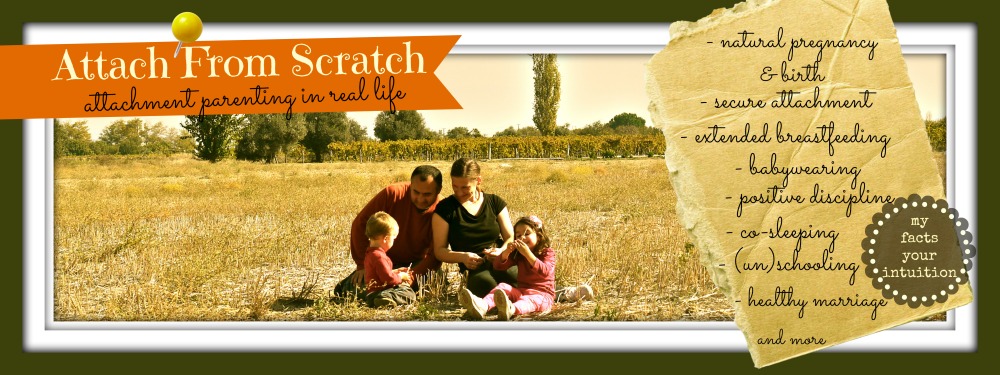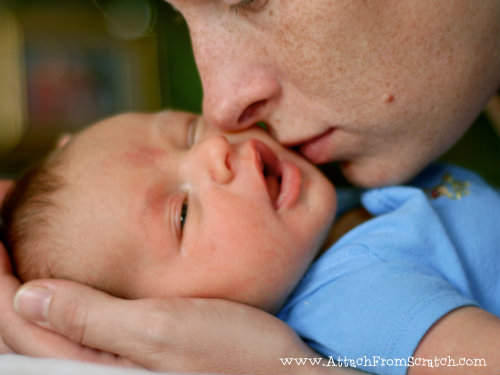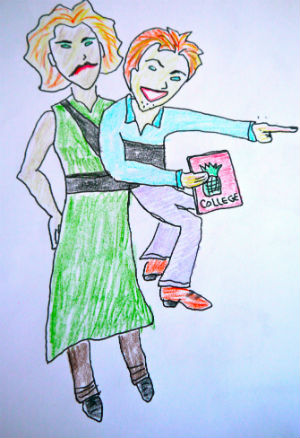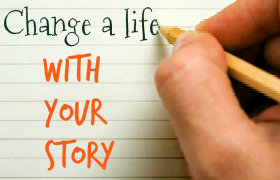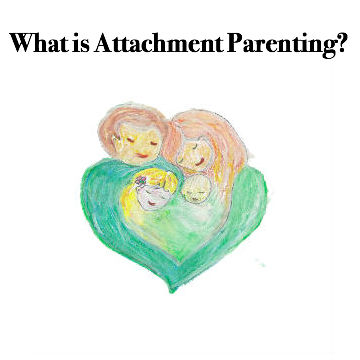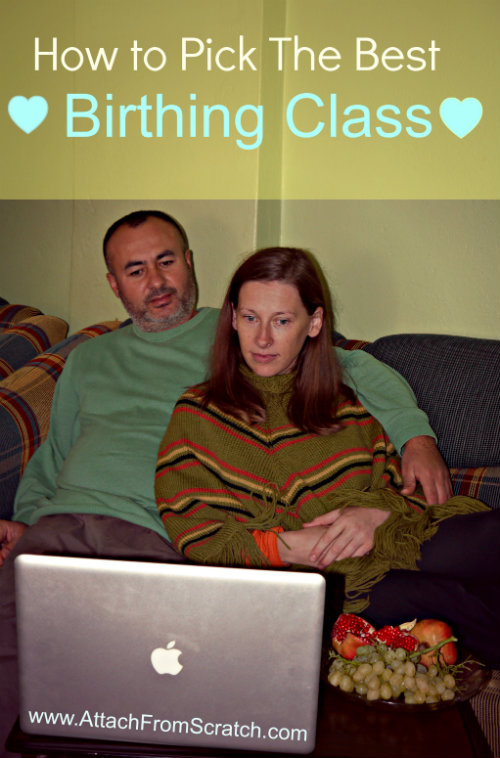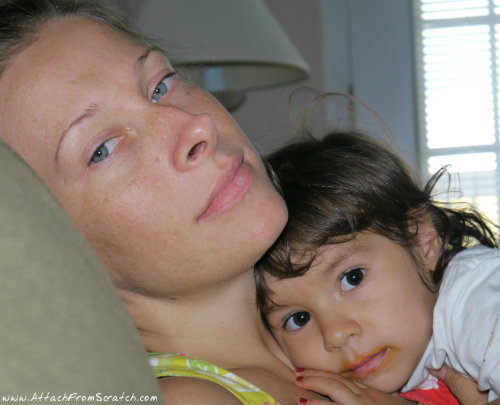Maternal Bond - Love at First Sight?
“Maternal Bond is indescribable”, - will say any mother who experienced this special kind of relationship with her child.
Many women start feeling this bond as early as they hear the first heartbeat during an ultrasound or they finally feel that miraculous movement in their tummies.
Other mothers - feel very bonded right after the birth.
There's an automatic assumption in our culture that all mothers will bond with their babies. Unfortunately, some women have difficulties with maternal bond.
What Causes Maternal Bond?
Talking chemically, maternal bond is caused by this hormone called 'oxytocin'. Scientists found that this hormone is very important for bonding.
As your pregnancy going to the end, the oxytocin levels increase dramatically and play huge role in your labor.
pitocin - the synthetic version of oxytocin, which should help the labor to start and proceed - induce the labor.
Yes, pitocin will start and speed up contractions, but it won’t do anything to the bonding process.
In order to produce natural oxytocin hormone you need to feel your baby being born. The pain caused by stretching means that baby is coming, then your brain releases a dose of oxytocin to get ready to bond and fall in love with your baby. Keep in mind that use of medications (induction or pain killers) will affect this special process.
Yes, you will still bond with your newborn even if you used drugs or had a c-section, but you will not get a full benefit of that natural oxytocin, which makes the bonding so much easier and more natural.
There are few more natural ‘helpers’ that will assist laboring, birthing, bonding and breastfeeding.
So
with all the help of natural hormones woman's body is perfectly created
to birth and bond best without any intervention of medications.
When responding to breastfeeding, baby makes his own oxytocin, but the mother can also transfer it to the infant in her milk.
If you bottle-feed, make sure you always hold you baby in your arms, in order for him to feel closeness and relaxation.
The reasons for not bonding
There are many reasons for not bonding with a child. Here are some of the most common ones:
- Problematic pregnancy
- Birth of premature baby
- Difficult delivery
- Mental, emotional and physical (not)well being
- Feeling scared and overwhelmed about taking care of a baby
- Stress over finances, relationship with partner
- Mother didn’t have a secure bond with her mother
- Infant’s temperament
Why is maternal bond so important?
There is still much to learn about bonding. But it is very clear that the bond between a mother and a child plays a significant role in a child’s life.
- It will shape the baby’s first model for intimate relationships,
- it will provide him sense of security and strong self-esteem.
A child who has a strong bond with his mother will have more self-confidence. This will help him be better in school, have more friends, make and achieve goals, which will keep him out of trouble. Kids who have strong bond with their mothers are less likely to do drugs or use alcohol.
How long does it take to bond?
Bonding is a process. In fact it is not something that can happen within minutes or within certain time period after birth.
When maternal bond doesn’t happen instantly after birth it may take somewhere from few weeks to several months until mother is “happy to be mother”.
The "Golden" (post-birth) hour is priceless
Right after birth is the best time to bond with your baby. During the very first hour is when both mother and child are the most sensitive to form an intense chemical connection with each other.
It is perfect time to recover from difficult labor, to successfully start breastfeeding and of course - bond, bond, bond.
While many (most) hospitals still require the baby to be moved to a warmer, weighed and measured, given vitamin K, and swaddled before being given to the mother The American Academy of Pediatrics (AAP) encourages mothers to have as much skin-to-skin contact as possible within the first few minutes of a baby's life.
According to Dr. Bob Sears this is how should normal first hour of baby’s life should look like.
- Healthy infants should be placed immediately onto the mother’s abdomen or chest when they are born and remain in direct skin-to- skin contact until the first feeding is accomplished
- The nurse should perform the first physical assessment while the baby remains on the mother’s chest
- Weighing, measuring, bathing, eye ointment and any injections or blood tests should wait until after the first feeding
- The baby should remain with the mother throughout the recovery period
Babies thrive most when kept in close, skin-to-skin contact with mom from the very beginning.
So it is very important to plan your birth whether you are going to give birth at the hospital or at home. Maternal Bond can happen much easier if it is done right from the beginning.
Ways to bond with baby
Take it easy. Maternal Bond will happen gradually while caring for your baby every day by:
- Sensitively responding to her cries
- Holding her
- Talking to her
- Interacting with her
- Playing with her
- Bathing (together with) her
- Feeding her on demand
Your baby trusts you when you respond to her cries and happy moments. She knows you are there for her anytime. This will help her to to thrive.
Baby’s brain grow when you interact with her. Playing, singing, talking, touching help baby’s brain to develop.
Baby massage is a process that will definitely help improve maternal bond. When massaging a baby you can talk, laugh, find her sensitive spots.
3D/4D ultrasounds help maternal bond
Ultrasound is a unique way to catch a glimpse of the fetus, and three-dimensional and four-dimensional (3D/4D) ultrasound may show much more realistic of the baby because of the real-life like images.
According to the new study, 3D/4D ultrasound increases maternal–fetal bonding in the third trimester.
“Bonding
is not an instant glue. It’s not a zero-sum game, either. Just because
you didn't hold your babies for the hour after they were born doesn't
meant it’s all over. It’s never too late to start bonding.” "What's
important is what you do with the time you have once you are together,
whether that's immediately after birth or not.” - William Sears, M.D.
You might like these articles too:
What is Attachment Parenting (AP)?
|
Secure Infant Attachment
Matters!
 |
Attachment Theory
What every parent should know about it
Share your bonding story...
Like This Page?
|
|
Let Google know about it |
